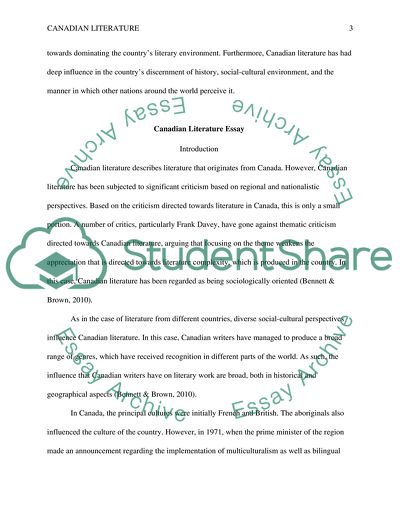Cite this document
(Canadian Literature in English review Example | Topics and Well Written Essays - 2750 words, n.d.)
Canadian Literature in English review Example | Topics and Well Written Essays - 2750 words. Retrieved from https://studentshare.org/literature/1850247-an-essay-about-canadian-literature-plus-essay-proposal-and-annotated-bibliography
Canadian Literature in English review Example | Topics and Well Written Essays - 2750 words. Retrieved from https://studentshare.org/literature/1850247-an-essay-about-canadian-literature-plus-essay-proposal-and-annotated-bibliography
(Canadian Literature in English Review Example | Topics and Well Written Essays - 2750 Words)
Canadian Literature in English Review Example | Topics and Well Written Essays - 2750 Words. https://studentshare.org/literature/1850247-an-essay-about-canadian-literature-plus-essay-proposal-and-annotated-bibliography.
Canadian Literature in English Review Example | Topics and Well Written Essays - 2750 Words. https://studentshare.org/literature/1850247-an-essay-about-canadian-literature-plus-essay-proposal-and-annotated-bibliography.
“Canadian Literature in English Review Example | Topics and Well Written Essays - 2750 Words”, n.d. https://studentshare.org/literature/1850247-an-essay-about-canadian-literature-plus-essay-proposal-and-annotated-bibliography.


